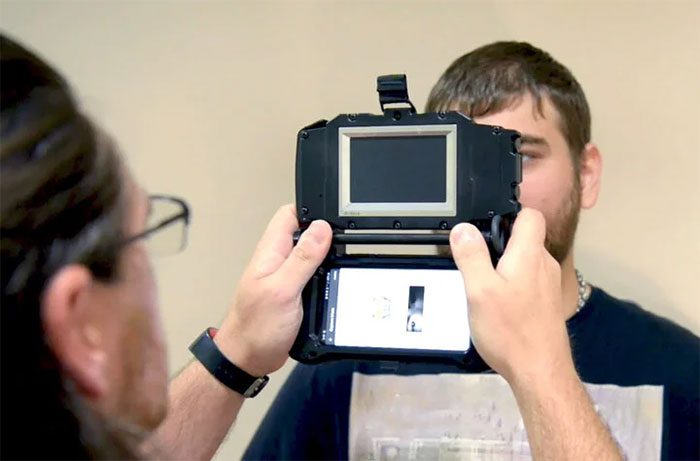The iris of each person has a unique pattern structure that does not change much over time, which is why many countries use it as a basis for identification databases.
Collecting iris data for citizen identity verification.
The recently approved Citizen Identification Law by the National Assembly specifies that the information in the identification database includes personal identification data; biometric information such as facial images, fingerprints, irises, DNA, and voice; occupation…
The iris is one of the biometric data that has attracted much attention for the new citizen identification system. Some believe that collecting iris data is essential, especially for people who cannot have their fingerprints taken due to disabilities or distorted fingerprints. However, there are also opinions that it is unnecessary and complicates the data collection process for citizen identification.
So, what is the iris and why is it used by many countries, including Vietnam, as a basis for identification databases for citizen IDs?

The biometric devices of U.S. security agencies allow for citizen identification through irises, faces, and fingerprints. (Image: FBI).
Unique Structure
According to the biological definition, the iris, simply put, is what we commonly refer to as the black part of the eye. Although called the black part, it can actually come in various colors such as blue, black, brown…
Notably, the structure of the patterns on the iris is very complex, consisting of wavy lines that curve from the inside out. These wavy lines form a unique structure that is considered distinctive for each individual (even differing between a person’s left and right eyes).
From these characteristics, both the iris and fingerprints can be used as a basis for identification databases.
To collect and recognize irises (Iris Recognition), a sensor with a camera and infrared light is needed.
The infrared light helps the camera accurately capture the patterns on each person’s iris, even if they are wearing contact lenses or glasses. The iris image is then captured and stored in an encrypted format on the device.
Additionally, to recognize irises within a database, specialized equipment is required, ranging from simple devices like smartphones to complex security scanners.
Currently, iris recognition technology has become popular and appears in many aspects of life. The simplest form is iris recognition on certain smartphone models, accessing high-security websites, and entering facilities that require security clearance.
Many countries around the world have also adopted this technology for citizen identification, passport verification, and information authentication through online portals.

Each person’s iris structure is unique and hardly changes over time.
The Future of Security Trends
According to the FBI, the iris is one of three identification data points alongside fingerprints and facial recognition used in the Next Generation Identification (NGI) system to manage citizen data. Among these, iris recognition technology is assessed to be more secure than fingerprints.
This is due to the fact that a person’s iris, from the time it forms at 10 months old until adulthood, changes very little. The probability of two irises being completely identical is almost impossible. Therefore, the iris provides stable security and eliminates confusion.
Iris recognition technology can be easily integrated into existing security systems or function as a standalone device. Iris scanning is not easily stolen, lost, or compromised like fingerprints.
From a security perspective, iris recognition is both quick and accurate, requiring no physical contact like fingerprints, ensuring user safety…, especially during infectious disease outbreaks.

Iris scanning technology has been available on high-end Samsung smartphones since 2016, starting with the Galaxy Note 7.
However, according to medical experts, while the iris cannot change, it can still be damaged due to pathological causes or external impacts such as eye trauma; intraocular hemorrhage; inflammation due to uveitis, iritis; heterochromia; glaucoma with prolonged use of eye drops; benign and malignant tumors of the iris; diabetes, central retinal vein occlusion…
Therefore, irises should only be used as one method among various data collection and citizen identification verification methods.




















































